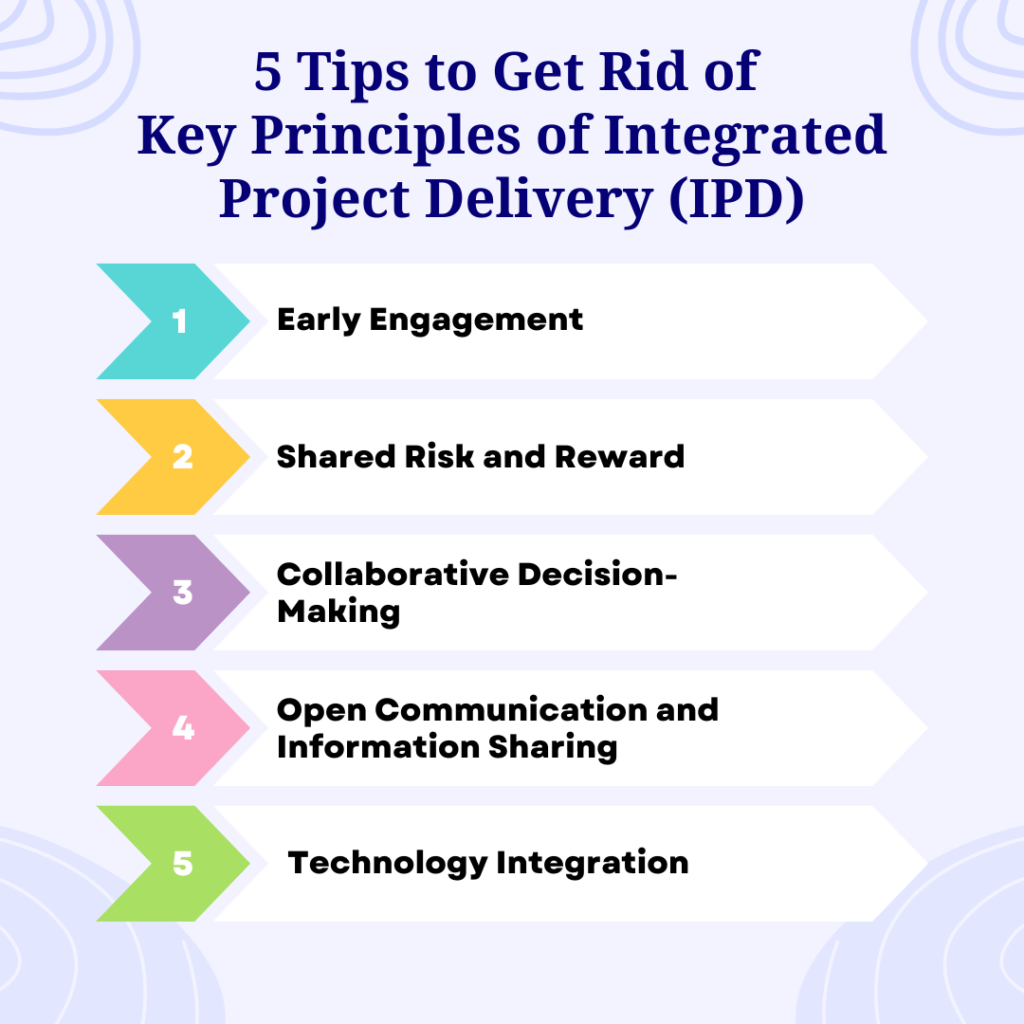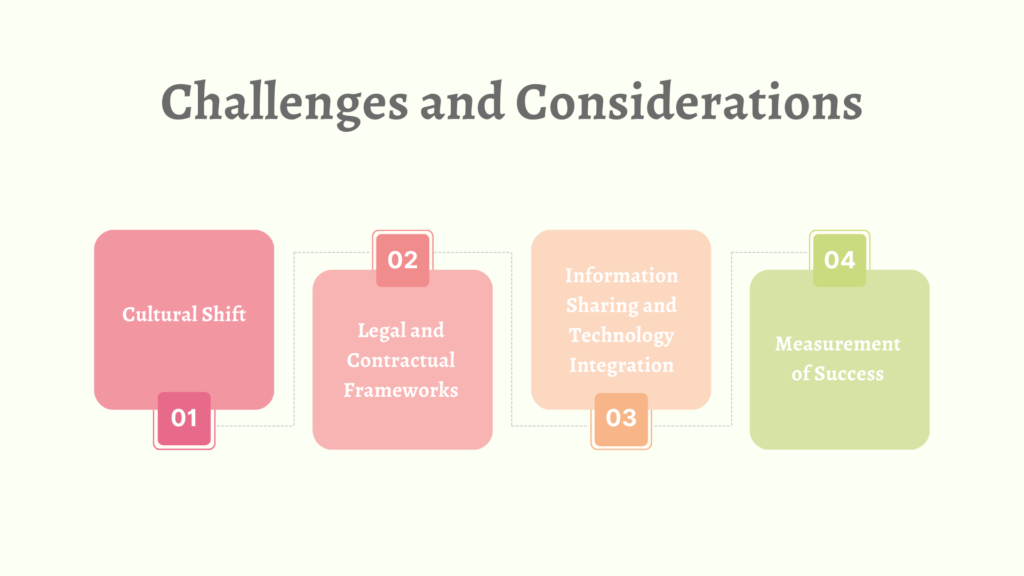In the dynamic world of construction, Integrated Project Delivery (IPD) stands out as a transformative approach that fosters collaboration, innovation, and efficiency across all phases of a project lifecycle. This blog explores the principles, benefits, challenges, and real-world applications of IPD, highlighting its significance in reshaping traditional project delivery methods.

Integrated Project Delivery (IPD) is a collaborative project delivery method that integrates people, systems, business structures, and practices into a cohesive process. Unlike traditional approaches where stakeholders often work in silos, Integrated Project Delivery encourages early involvement and collaboration among all project participants—owners, architects, engineers, contractors, and subcontractors—from project inception to completion.
Key Principles of Integrated Project Delivery (IPD)
Integrated Project Delivery (IPD) represents a paradigm shift in construction project management, emphasizing collaboration, efficiency, and innovation. Unlike traditional delivery methods , where stakeholders operate in silos, IPD fosters a cohesive approach from project inception to completion. This blog explores the core principles of integrated project delivery that differentiate it and highlight its transformative impact on construction projects.

- Early Engagement : A fundamental principle of IPD is early engagement of key stakeholders. Unlike conventional methods where stakeholders are brought in at later stages, IPD involves their inclusion from the conceptualization phase. This early involvement fosters a shared understanding of project goals, constraints, and expectations. By aligning stakeholders’ perspectives early on, IPD sets the stage for collaborative decision-making and proactive problem-solving throughout the project lifecycle.
- Shared Risk and Reward : Integrated Project Delivery promotes a collective responsibility for project outcomes through shared risk and reward mechanisms. Unlike traditional contracts that allocate risks primarily to contractors or owners, IPD redistributes risks across all project participants based on performance metrics and predefined goals. This approach incentivizes collaboration and fosters a commitment to achieving project success collectively. Shared rewards, such as bonuses tied to project milestones or cost savings, further align stakeholders’ interests towards achieving common objectives.
- Collaborative Decision-Making : In Integrated Project Delivery, decision-making is a collaborative effort involving all stakeholders—owners, architects, engineers, contractors, and subcontractors. By leveraging the expertise and insights of diverse team members, IPD optimizes project design, scheduling, and cost management. Collaborative decision-making allows for comprehensive evaluation of alternatives, risk mitigation strategies, and innovative solutions that may not arise in traditional hierarchical structures. This inclusive approach enhances project efficiency, quality, and client satisfaction by ensuring that decisions reflect a balanced consideration of technical feasibility, cost implications, and stakeholder priorities.
- Open Communication and Information Sharing : Transparency and open communication are integral to the success of IPD. Unlike traditional project delivery methods where information flow may be restricted or delayed, IPD emphasizes real-time sharing of information across all stakeholders. Advanced communication channels and digital tools facilitate seamless exchange of data, updates, and feedback, fostering a culture of trust and accountability among project participants. This transparency enhances decision-making agility, minimizes misunderstandings, and enables proactive management of project challenges as they arise.
- Technology Integration : Advanced technologies and digital tools play a crucial role in enabling collaboration and enhancing project predictability under IPD. Tools such as Building Information Modeling (BIM), project management software, and cloud-based platforms facilitate real-time collaboration, data sharing, and project visualization. Technology integration allows stakeholders to access up-to-date project information, monitor progress, and coordinate tasks more effectively. By leveraging these tools, IPD streamlines workflows, reduces inefficiencies, and improves overall project performance, from planning through construction to occupancy.
Benefits of Integrated Project Delivery (IPD)
Integrated Project Delivery (IPD) represents a progressive approach to construction project management that prioritizes collaboration, efficiency, and innovation. By integrating stakeholders early in the project lifecycle and fostering shared responsibility, IPD offers a range of benefits that enhance project outcomes and stakeholder satisfaction. This blog explores the significant advantages of implementing IPD in construction projects.

| Benefit | Description | Example |
|---|---|---|
| Enhanced Collaboration | Promotes collaborative decision-making among stakeholders. | A report by PwC India highlighted that IPD can reduce project delays by up to 20% through improved coordination. |
| Improved Project Efficiency | Streamlines workflows, reducing construction timelines and costs. | Research from the Indian Institute of Management (IIM) suggests that IPD projects in India can achieve up to 15% faster completion times. |
| Cost Savings | Reduces overall project costs through optimized resource allocation. | The Wave Group’s Wave One project in Noida achieved 8% cost savings through IPD-driven value engineering and procurement strategies. |
| Enhanced Quality and Innovation | Encourages innovative design solutions and sustainable practices. | Sky Forest project in Mumbai implemented IPD to achieve a 10% improvement in building efficiency and sustainability ratings. |
| Client Satisfaction | Ensures alignment with client expectations, improving satisfaction rates. | Indiabulls Real Estate’s IPD approach led to 90% client satisfaction in their Sky Forest project due to transparent communication and quality outcomes. |
- Enhanced Collaboration : One of the primary benefits of integrated project delivery is its ability to break down traditional barriers and promote collaboration among diverse project stakeholders. Unlike traditional methods where stakeholders operate independently, IPD encourages early involvement and collective decision-making from project inception. Architects, engineers, contractors, and subcontractors collaborate closely to align project goals, address challenges, and explore innovative solutions. This collaborative approach fosters a shared understanding of project objectives and cultivates a team-oriented mindset focused on achieving collective success.
- Improved Project Efficiency : IPD enhances project efficiency through integrated planning and streamlined workflows. By involving stakeholders early, IPD facilitates comprehensive planning that considers design, construction, and operational aspects from the outset. This integrated approach minimizes misunderstandings, reduces rework, and optimizes resource allocation throughout the project lifecycle. Early identification of potential issues allows for proactive mitigation strategies, ensuring smoother project execution and accelerating project timelines. Ultimately, improved efficiency under IPD leads to cost savings and enhances overall project productivity.
- Cost Savings : Shared risk and reward mechanisms inherent in IPD incentivize efficient resource utilization and cost-effective decision-making. Unlike traditional contracts that allocate risks predominantly to contractors or owners, IPD redistributes risks across all project participants based on performance metrics and predefined goals. This collaborative risk management approach encourages stakeholders to prioritize project success over individual interests, leading to potential cost savings through optimized procurement strategies, value engineering, and proactive risk mitigation.
- Enhanced Quality and Innovation : IPD fosters a culture of continuous improvement and innovation by leveraging collective expertise and continuous feedback loops. Collaborative decision-making allows stakeholders to explore innovative design solutions, construction methodologies, and sustainable practices that enhance project quality and performance. By integrating diverse perspectives and leveraging advanced technologies such as Building Information Modeling (BIM) and digital collaboration tools, IPD enables stakeholders to refine project designs, optimize building performance, and meet evolving industry standards.
- Client Satisfaction : At its core, IPD is designed to align project outcomes with client expectations, resulting in higher client satisfaction and increased project success rates. By involving clients early in the planning and decision-making processes, IPD ensures that project objectives, budgetary constraints, and quality standards are consistently met. Transparent communication, regular updates, and collaborative problem-solving enhance client confidence and trust throughout the project lifecycle. Ultimately, IPD’s client-centric approach fosters long-term relationships and positions project teams as trusted advisors committed to delivering exceptional results.
Challenges and Considerations
While IPD offers compelling benefits, its adoption presents challenges that require careful consideration:

- Cultural Shift : Shifting from traditional hierarchical structures to collaborative teamwork requires a cultural shift among project participants, necessitating buy-in and commitment from all stakeholders.
- Legal and Contractual Frameworks : Developing contractual agreements that align with IPD principles, including risk-sharing mechanisms and performance-based incentives, requires careful negotiation and legal expertise.
- Information Sharing and Technology Integration : Effective utilization of digital tools and information sharing platforms requires investment in robust IT infrastructure and training to ensure seamless integration and data security.
- Measurement of Success : Establishing clear performance metrics and benchmarks for measuring success under an IPD framework is essential to evaluating project outcomes and driving continuous improvement.
Real-World Applications of Integrated Project Delivery (IPD) in India
Integrated Project Delivery (IPD) has proven to be a transformative approach in construction management globally, and its successful implementation in India showcases its efficacy in diverse project environments. Here are two notable case studies from India where IPD principles have been successfully applied:
Case Study 1: The Wave Group’s Wave One, Noida

Project Overview:
Wave One, located in Sector 18 of Noida, is a prestigious commercial project developed by The Wave Group. Spanning over 2 million square feet, it comprises office spaces, retail outlets, and luxury apartments.
Implementation of IPD:
The Wave Group adopted IPD principles to integrate planning, design, and construction phases seamlessly. Early engagement of key stakeholders, including architects, engineers, contractors, and project managers, allowed for collaborative decision-making and proactive problem-solving. This approach ensured alignment with project goals, optimized resource utilization, and streamlined project workflows from conceptualization to completion.
Benefits and Outcomes:
- Enhanced Collaboration: IPD facilitated close collaboration among stakeholders, leading to innovative design solutions and efficient construction practices.
- Timely Delivery: By integrating schedules and optimizing construction sequencing, IPD enabled Wave One to be completed within the stipulated timeline, meeting market demand and client expectations.
- Quality Assurance: The collaborative approach under IPD ensured adherence to high-quality standards throughout the project, enhancing the overall appeal and functionality of Wave One as a landmark development in Noida.
Case Study 2: Indiabulls Real Estate’s Sky Forest, Mumbai
Project Overview:
Sky Forest, situated in Lower Parel, Mumbai, is a luxury residential project developed by Indiabulls Real Estate. The project features high-rise residential towers with state-of-the-art amenities and panoramic views of the city skyline.

Implementation of IPD:
Indiabulls Real Estate embraced IPD principles to optimize project efficiency and ensure superior quality in construction. Through collaborative planning and integrated decision-making, stakeholders worked together to mitigate risks, optimize design specifications, and enhance project sustainability. IPD allowed for transparent communication channels and real-time information sharing, enabling proactive management of challenges and opportunities throughout the project lifecycle.
Benefits and Outcomes:
- Cost Efficiency: IPD contributed to cost savings through value engineering and optimized procurement strategies, ensuring efficient resource allocation and budget adherence.
- Innovation in Design: The collaborative efforts under IPD fostered innovative design solutions that met stringent regulatory standards and exceeded market expectations for luxury living spaces in Mumbai.
- Client Satisfaction: By prioritizing client objectives and integrating feedback into the project’s development, Sky Forest achieved high levels of client satisfaction and market acceptance upon completion.
Future Trends and Outlook in Integrated Project Delivery (IPD)
Integrated Project Delivery (IPD) is poised for significant evolution as the construction industry embraces technological advancements and sustainability imperatives. Several key trends are shaping the future landscape of IPD, promising to enhance project efficiency, resilience, and environmental stewardship.

- Digital Twin Technology : Digital twins are virtual replicas of physical assets, processes, or systems that enable real-time simulations and analysis. In IPD, digital twins are revolutionizing project management by providing stakeholders with insights into project performance, operational efficiencies, and potential risks. By leveraging data analytics and AI algorithms, digital twins optimize decision-making, enhance collaboration among project teams, and facilitate proactive problem-solving throughout the project lifecycle. This technology promises to revolutionize how projects are planned, executed, and maintained, ensuring greater predictability and performance optimization.
- Prefabrication and Modular Construction : Prefabrication and modular construction methods are gaining prominence in IPD due to their ability to streamline project timelines, reduce on-site disruptions, and improve construction quality. Off-site manufacturing of building components allows for concurrent activities, minimizing construction waste and optimizing resource utilization. IPD integrates prefabrication seamlessly into project planning and execution, facilitating faster project delivery without compromising on design flexibility or quality standards. This trend not only enhances project predictability but also supports sustainable construction practices by reducing environmental footprint and enhancing project resilience.
- Sustainable Design and Construction : With a growing emphasis on sustainability, Integrated project delivery is increasingly focusing on green building practices and sustainable materials selection. Sustainable design principles, such as energy efficiency, passive design strategies, and renewable energy integration, are integrated early in the project lifecycle through collaborative decision-making and stakeholder engagement. IPD promotes lifecycle assessment of materials and building systems to minimize environmental impact and enhance long-term project viability. By prioritizing sustainability, IPD projects contribute to mitigating climate change impacts, improving indoor environmental quality, and meeting regulatory requirements, thus ensuring projects are resilient and future-proofed against environmental challenges.
Conclusion
Integrated Project Delivery represents a paradigm shift in construction project management, emphasizing collaboration, efficiency, and innovation. By fostering early engagement, shared responsibility, and transparent communication among stakeholders, IPD not only enhances project outcomes but also lays the foundation for sustainable growth and client satisfaction in the construction industry.
As construction firms worldwide recognize the transformative potential of IPD, investing in the necessary cultural, technological, and contractual frameworks will be crucial to realizing its full benefits. By embracing Integrated Project Delivery, stakeholders can navigate complexity, mitigate risks, and deliver exceptional projects that meet the evolving needs of society in a rapidly changing world.






